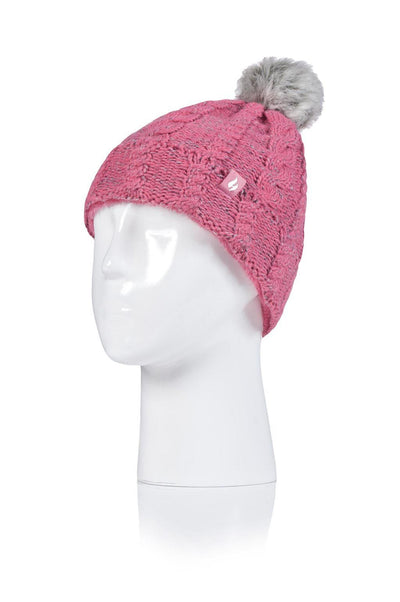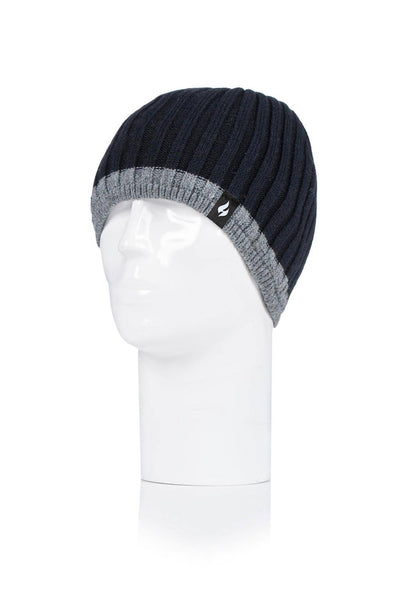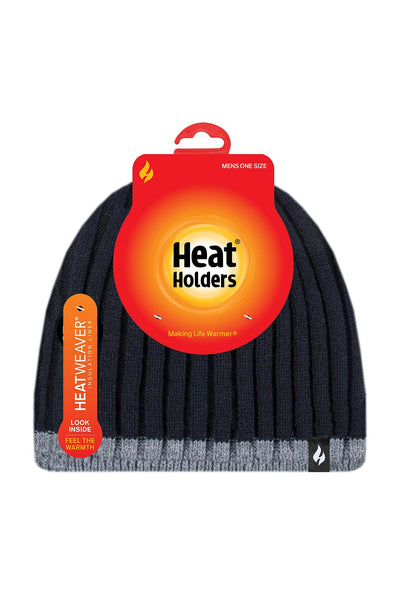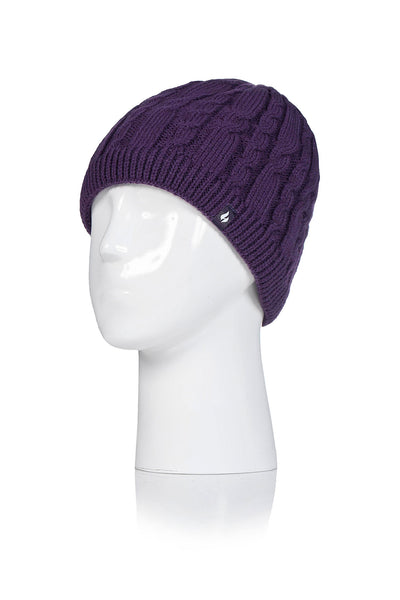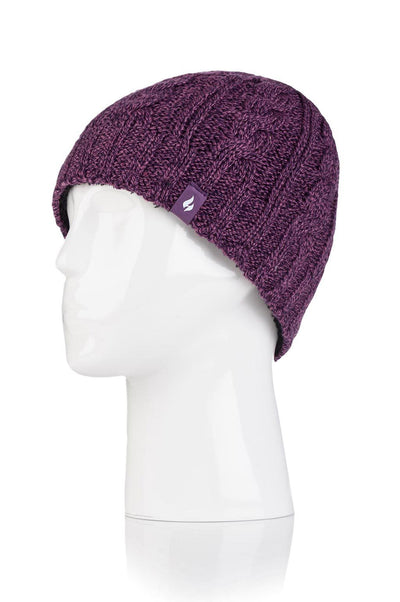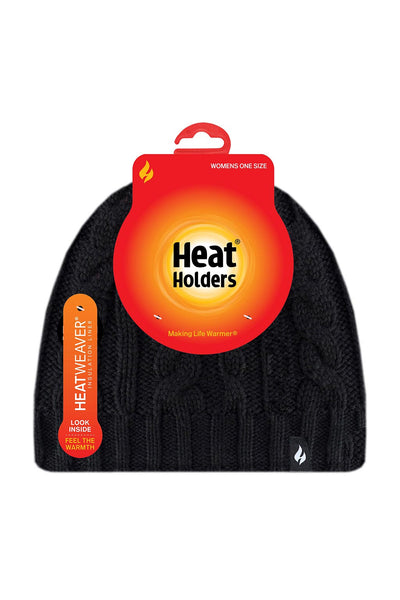As the temperature drops and winter arrives, staying warm becomes a top priority. While multiple layers and thick jackets are essential in combating the cold, there is one accessory that often gets overlooked - the humble beanie. Wearing a beanie not only adds a fashionable flair to your winter ensemble but also plays a crucial role in helping retain head heat and keeping you warm during the colder months.
We’ll highlight and help you understand the importance of:
- Head heat retention
- The different types of beanies available, and
- How to make the right choice for a cozy winter season
What Is the Importance of Head Heat Retention?
When it comes to staying warm, heat loss is a significant factor to consider. The human body loses heat through various means, but one of the fastest ways it escapes is through the head. Contrary to popular belief, the notion that we lose the majority of our body heat through the head is a misconception. However, it is still essential to protect the head from losing warmth due to its high surface area and proximity to the elements.
What Is the Science Behind Body Heat Loss?
Heat loss from the body occurs through four main mechanisms: conduction, convection, radiation, and evaporation. Conduction refers to the direct transfer of heat from the body to colder surfaces, while convection involves heat loss to the air or water around us. Radiation and evaporation occur when heat is emitted as infrared radiation or when sweat evaporates from the skin's surface, respectively.
Let's dive deeper into each mechanism:
Conduction: This process occurs when your body comes into direct contact with colder surfaces. For example, sitting on a cold chair or touching a chilly object can cause heat to transfer from your body to the colder surface. When it comes to head heat retention, wearing a beanie can create a barrier between your scalp and the cold environment, reducing the amount of heat lost through conduction.
Convection: Heat loss through convection happens when the air or water surrounding your body absorbs your body heat. For instance, on a windy day, the air can carry away the warmth from your head, making you feel colder. By wearing a beanie, you can create a layer of insulation that minimizes the impact of convection on your head, helping to retain heat.
Radiation: The human body emits heat in the form of infrared radiation. This radiation can escape into the environment, especially from areas with a larger surface area, such as the head. Wearing a beanie can help to trap some of this radiated heat close to your scalp, preventing it from dissipating into the surroundings.
Evaporation: Sweat is another way our body loses heat. When we sweat, the moisture on our skin evaporates, taking away heat in the process. Although the head is not a major area for sweat production, it is still important to keep it protected. A beanie can help absorb any sweat that may occur on your scalp, preventing it from evaporating and contributing to heat loss.

Why the Head Is Crucial for Heat Retention
The head plays a vital role in overall body heat retention due to its significant blood flow and proximity to essential organs. By wearing a beanie, you create an additional layer that helps to trap warm air close to your scalp, reducing heat loss through conduction, convection, and radiation. Furthermore, a beanie protects from the cold wind, preventing chilling and maintaining comfort.
So, next time you venture out into the cold, don't forget to grab your trusty beanie. It's not just a fashion statement but a practical tool for keeping your head warm and cozy!
The Beanie: A Winter Essential
Beanies have a long history and have become a winter essential for people of all ages. From their humble beginnings as a pragmatic knit cap for sailors and fishermen to their modern-day status as a stylish fashion statement, beanies have evolved into a must-have accessory for both warmth and aesthetics.
But what makes the beanie so special? Let's dive into its fascinating history and explore the different types of beanies available today.
The History of the Beanie
The origin of the beanie can be traced back to the early 1900s when it was primarily worn by manual laborers and athletes for its functionality. These hardworking individuals needed a hat that could keep their heads warm and protected from the harsh elements while allowing them to move freely.
As time went on, the beanie started to gain popularity among different subcultures and fashion trends. It became a symbol of rebellion and non-conformity, worn by artists, musicians, and skateboarders who wanted to make a statement. The beanie's simple yet versatile design made it the perfect accessory to express one's individuality.
Today, the beanie has transcended its subcultural roots and has become a mainstream fashion staple. It is no longer limited to specific groups but is embraced by people from all walks of life. Whether you're a hipster, a student, or a busy professional, there's a beanie out there that suits your style and personality.
Different Types of Beanies
When it comes to beanies, there is a wide variety of styles to choose from. The classic knit beanie, with its snug fit and timeless design, remains a popular choice for many. It can be worn with almost any outfit and adds a touch of warmth and sophistication.
If you're looking for something more relaxed and casual, the slouchy beanie is the way to go. With its loose, unstructured fit, this style exudes a laid-back vibe and is perfect for those lazy weekends or casual outings with friends.
For those who want to add a playful touch to their winter wardrobe, pom-pom beanies are a fun and whimsical option. The fluffy pom-pom on top adds a pop of color and personality to any outfit, making it a great choice for those who like to stand out from the crowd.
When it comes to materials, beanies come in a range of options to suit different needs. Wool beanies are known for their excellent insulation properties, keeping your head warm even in the coldest of temperatures. Acrylic beanies, on the other hand, are lightweight and easy to care for, making them a practical choice for everyday wear. And for those who prioritize comfort above all else, fleece beanies offer a soft and cozy feel that is perfect for chilly winter days.
So, whether you're looking for a beanie to keep you warm during your outdoor adventures or to add a stylish touch to your winter outfits, there's a beanie out there for you. Embrace the versatility and charm of this winter essential and make a statement with your headwear choice.
How Beanies Contribute to Warmth
When it comes to warmth, the material and fit of a beanie play a crucial role in insulating the head and retaining body heat. Understanding the factors that contribute to the warmth offered by beanies can help you choose the right one for your winter needs.
Material and Insulation
The choice of material significantly affects a beanie's ability to keep you warm. Wool beanies, for example, offer excellent insulation properties as they have natural temperature-regulating capabilities and can retain heat even when wet. Wool fibers have a crimped structure that creates tiny air pockets, trapping warm air close to the head and providing insulation against the cold. Additionally, wool is naturally moisture-wicking, meaning it can absorb and evaporate sweat, keeping your head dry and warm.
On the other hand, synthetic materials like acrylic and fleece offer lightweight insulation and moisture-wicking properties, making them ideal for various winter activities. Acrylic beanies are known for their softness and affordability, providing a good balance of warmth and comfort. Fleece beanies, on the other hand, are highly breathable and quick-drying, making them suitable for intense outdoor activities where sweat management is crucial.
Fit and Coverage
Choosing the right fit and coverage is essential for maximizing warmth. A snug-fitting beanie that covers the ears and extends down to the nape of the neck provides a high level of protection against cold temperatures and wind chill. The close fit ensures that no gaps are left for cold air to seep in, while the extended coverage prevents heat loss from the neck area, which is particularly vulnerable to cold.
Opting for a beanie with a folded cuff or double-layer construction adds an extra layer of insulation, enhancing warmth. The folded cuff creates a double layer of fabric over the ears, providing additional protection and insulation in this sensitive area. Double-layer beanies, on the other hand, have an inner layer that adds extra warmth and comfort without compromising breathability.
When choosing a beanie, it's important to consider your specific needs and preferences. If you're engaging in high-intensity winter activities, such as skiing or snowboarding, a lightweight and moisture-wicking synthetic beanie might be the best choice to keep you warm and dry. On the other hand, if you're looking for a versatile everyday beanie, wool or acrylic options can provide the warmth and comfort you need.
Choosing the Right Beanie for Winter
When selecting a beanie for winter, several factors should be taken into consideration to ensure you find the perfect match for your needs.
Factors to Consider When Buying a Beanie
-
Material: Consider whether you prefer natural or synthetic fibers based on their insulation and moisture-wicking properties.
-
Fit: Determine whether you prefer a slouchy or snug fit and whether you want additional coverage for your ears and neck.
-
Style: Explore various designs, colors, and embellishments to find a beanie that suits your personal style and complements your winter wardrobe.
- Functionality: If you plan on engaging in outdoor activities, look for beanies specifically designed for active pursuits, such as those with moisture-wicking abilities or reflective elements for increased visibility.
Additional Benefits of Wearing a Beanie
Aside from their primary role in keeping you warm during the winter months, beanies offer additional benefits that make them a worthwhile investment.
Protection Against Wind and Snow
When the winter winds blow, and the snow falls, a beanie acts as a barrier against the elements. By covering your head, you shield your ears, scalp, and forehead from the biting cold and the potential for frostbite. A beanie is a valuable companion during outdoor activities, protecting you from wind chill and ensuring comfort throughout.
Fashion and Style Considerations
In addition to their functional benefits, beanies have become a staple fashion accessory. With a seemingly endless array of styles, colors, and patterns available, beanies allow you to express your personal style while staying warm. Whether you prefer a classic, minimalist look or a bold, statement-making beanie, there is a design for every fashion-conscious individual.
Wearing a beanie during the winter serves more than just a fashion purpose. By understanding the importance of head heat retention, the variety of beanies available, and how they contribute to warmth, you can make an informed decision when choosing the right beanie for winter. Whether you prioritize functionality, style, or both, a beanie is a versatile accessory that helps keep you warm and comfortable during the coldest months of the year.




